The Place of the Final Days of Simón Bolívar
Probably THE most interesting thing about Santa Marta I found during my short stay there is that it's the place where the most famous character of South America's move for independence stayed... and ultimately died. The person in question is none other than Simón Bolívar, who is considered as the liberator of a number of countries, such as Venezuela, Colombia, Ecuador, Panama, Peru, and the nation that took up his name, Bolivia.
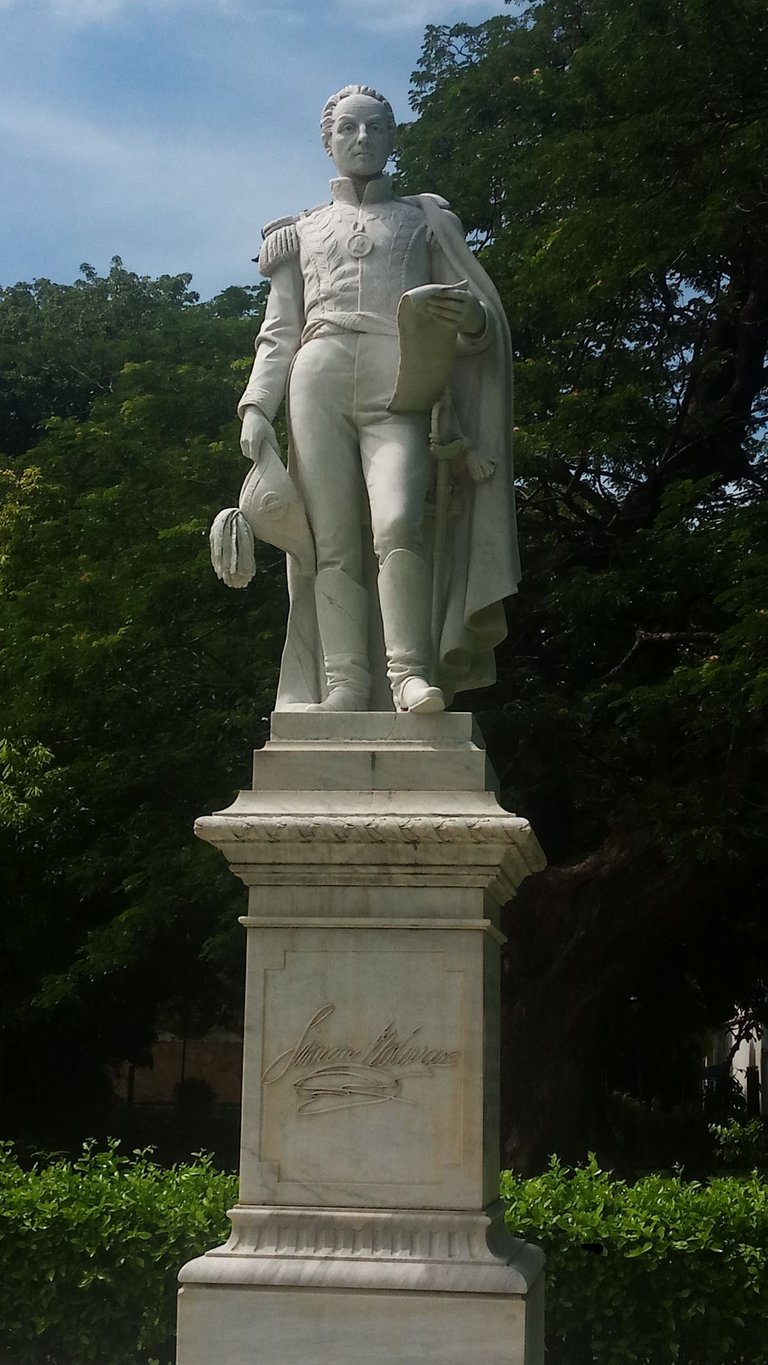
The exact location is a former sugarcane plantation called La Quinta de San Pedro Alejandrino, which is located right within Santa Marta, though the lush vegetation offers so much protection from the urban sprawl, that it looks like rural hacienda it used to be during Bolivar's time. As the man is held in such a high regard, the entire site is being preserved as a museum, while an appropriate monument has been erected right next to it. Upon entering a guide was offered us, who turned out to be not only very knowledgeable about Bolivar, but also had a great talent for presenting the information in an exciting way, bringing to life the man who came to this place literally to die.
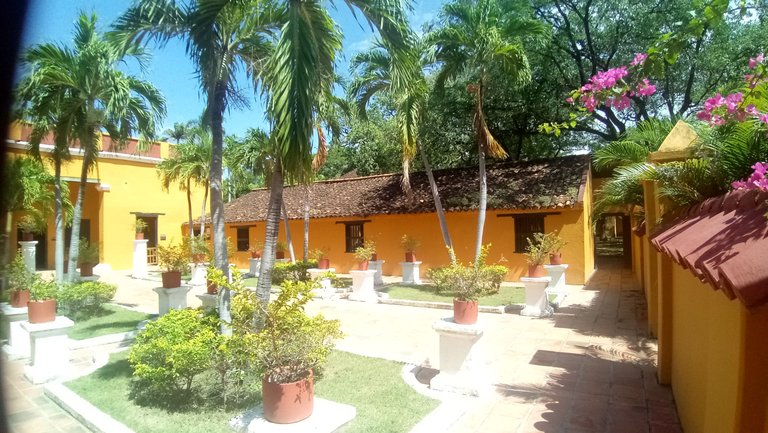
The Last Two Weeks of the Liberator
After an eventful life marked by the fierce struggle for independence, several assassination attempts, and a number of fatal diseases, Simon Bolivar's path led him to the Caribbean coast of Colombia. He had to escape Bogotá as opposing forces were trying to have him killed, and his initial goal was to get on a ship to Europe. However, by this time he was suffering of tuberculosis, malaria, and liver cirrhosis. Also, his financial coffers had been virtually used up entirely, so in the end he had to realize that there was not much more to be had for him.
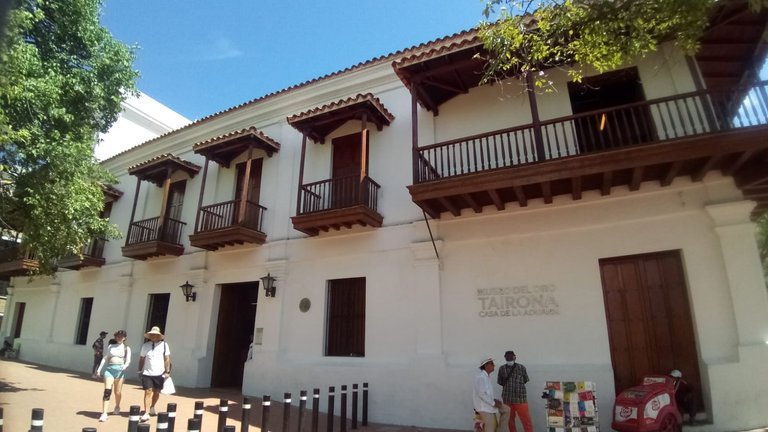
He stayed at a friend's house, which we happened to have visited the previous day. It is known today as the Gold Museum, though besides a couple of indigenous gold artifacts the building has an exhibit on the cultures of the region as well as the history of the city. Very recommendable, actually, though Bolivar himself did not spend more than a few days there. Once the physician who was treating him gave him the final diagnosis, Bolivar took up his friend's offer and moved to the plantation, since it reminded him of the farm near Caracas, Venezuela, where he grew up. There he lived out his last days. It was to be not more than eleven.
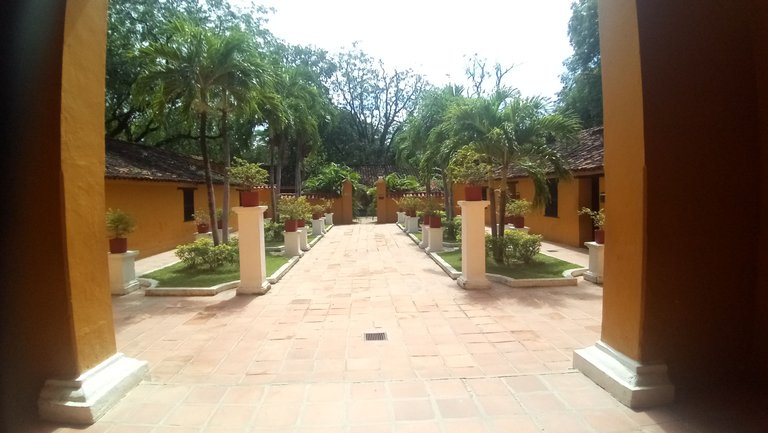
The House, the Bed, and the Clock
Walking through the premises offered us a nice glimpse into the 19th century, complete with stables and cooking / baking facilities of the owners. Slavery was the basis of the economy back then, which Bolivar helped to abolish, even though that was not his primary goal. Still, he is recognized for this systematic change, even though it only took place thirty years after his death.
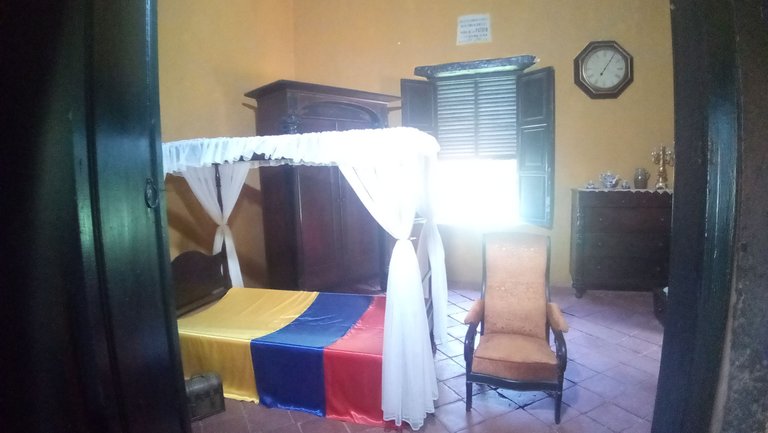
The room where he died remains unchanged since then. The bed is covered with the Colombian flag, and the clock on the wall was stopped at the minute of his death. Curiously, the right and left hands are reversed, meaning he died at 1:35 instead at 5:05. The rest of the living space shows the relatively humble surroundings, mostly due to the age rather than the economical background of his supporters.

Among a few personal items that remained, there is a genealogical tree showing his remaining descendants, all indirect ones, since he never had any children of his own. Also, there is a life-size death statue of him, showing his very benign size. He never was a man of great stature, and due to his illnesses his weight at his death was no more than 35 kg or 77 pounds.
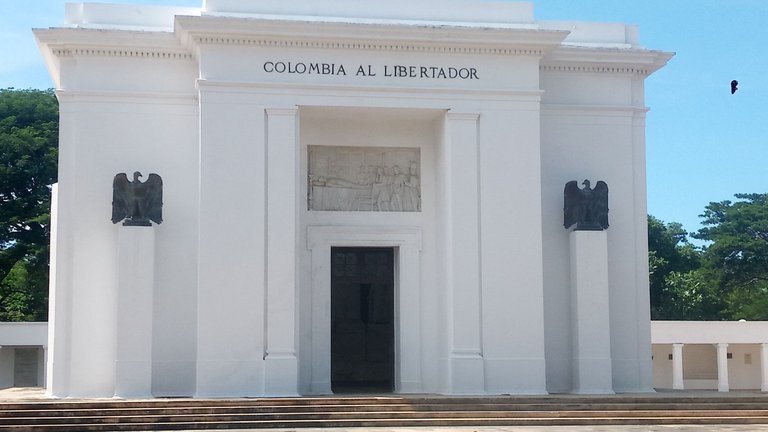
Next to the original farm house a grandiose monument was erected to commemorate the man, or rather his legacy, which he is known for all over the world, not just in South America. At this point my interest in the entire site started waning. I thought it interesting though, that a man who was so small and weak at his death would be revered in such a deifying manner. But then again, he would not be the only one to be taken up in a cult of personality, so I accepted it as the probable outcome in a country so proud of its history.
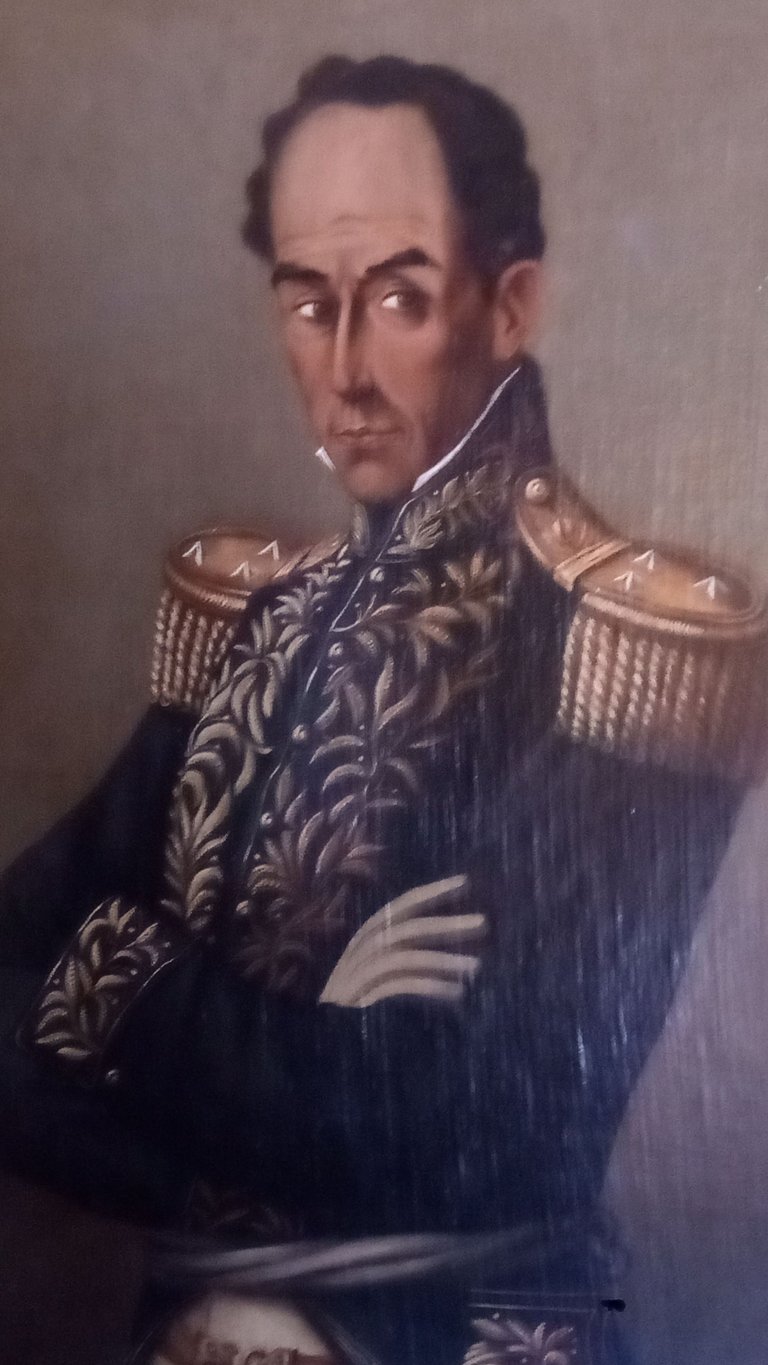
All in all I was happy to have visited here, an experience I probably would not have sought out, hadn't I been in Santa Marta anyway. However, this way, the visit to Bolivar's place of death was an interesting addition to an otherwise purely touristic holiday / family reunion.
You can check out this post and your own profile on the map. Be part of the Worldmappin Community and join our Discord Channel to get in touch with other travelers, ask questions or just be updated on our latest features.